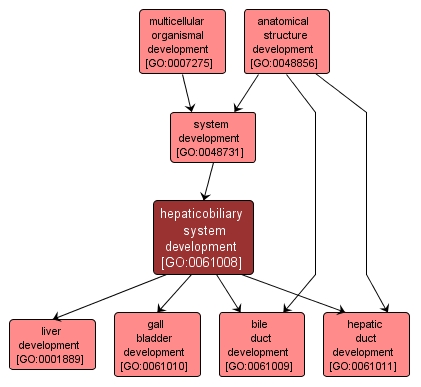| Desc: |
The progression of the hepaticobiliary system over time, from its formation to the mature structure. The hepaticobiliary system is responsible for metabolic and catabolic processing of small molecules absorbed from the blood or gut, hormones and serum proteins, detoxification, storage of glycogen, triglycerides, metals and lipid soluble vitamins and excretion of bile. Included are the synthesis of albumin, blood coagulation factors, complement, and specific binding proteins. |














